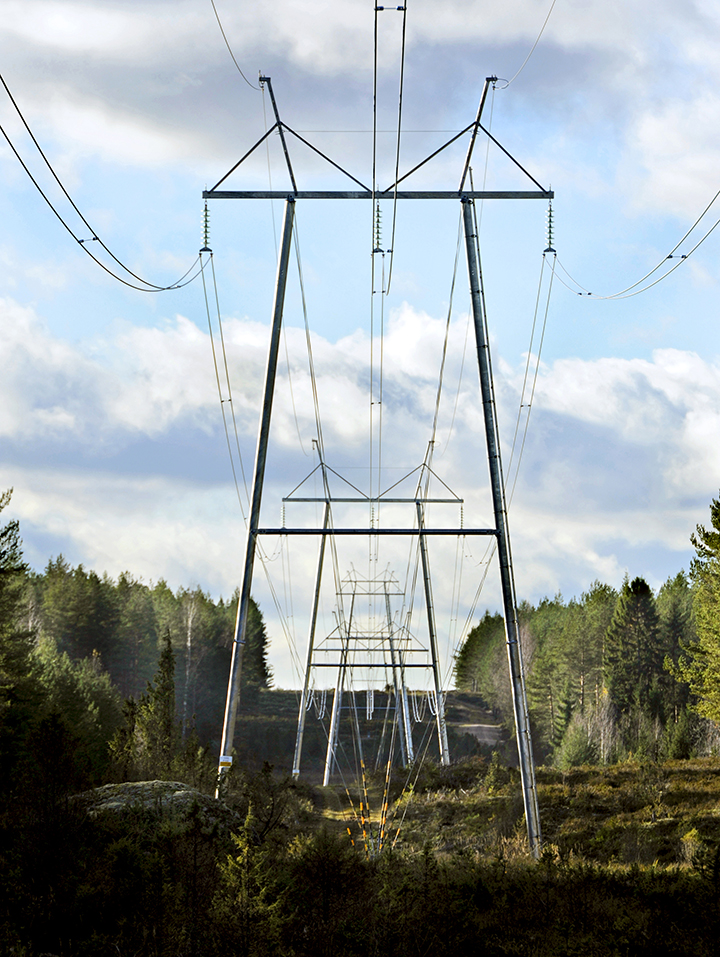
“Our employees come from different educational backgrounds and take on a wide variety of roles, but nobody is fully ready when they are fresh out of school. Organisations in the sector have a major role to play in developing competence and occupational safety. Orientation includes learning about the company and the job, and also about occupational safety. Everyone has a responsibility to look after occupational safety, and this cannot be outsourced or separated out from other work,” says Veera Höglund, Omexom’s Country Manager for Finland.
VINCI Energies, a major international company, acquired Infratek about a year ago and, since January, Infratek has been operating under the Omexom brand. The company’s legal name remains Infratek Finland Oy. Omexom supplies construction and maintenance work for Fingrid.
“As part of a large group of companies, we are able to compare our business and occupational safety expertise internationally. We can develop our skills by listening to others, and we can also share our competences,” Höglund states.
The largest employee group in the company is electricians, who carry out fault repairing and maintenance works all over Finland.
“When we take on a new employee, we go through the occupational safety matters and talk about what they mean to us. Statutory responsibility for occupational safety lies with the employer, but everyone has a responsibility on the work site. We instruct our employees to be vigilant and follow the rules,” says Jani Gratschev, Business Unit Manager for Omexom’s substation services.
Slips and trips are typical work site accidents
It is easy to presume that working with electricity would cause the most hazards in an electrician’s work, but high-voltage accidents are thankfully extremely rare.
“There is no need to fear electricity, but it must be respected. The operating instructions and rules are good and strict, and they must be followed closely. Our employees are very careful in this regard. I have worked in this sector for a long time and, fortunately, high-voltage accidents occur very rarely in Finland. On our work sites over the years, absences due to illness have been caused by small and irritating problems such as slips and trips,” says Gratschev.
Hazardous incidents have arisen in a wide range of circumstances. There have been cases where old control cables that are no longer in use have, for some reason, remained live. Sometimes, hazards arise due to inadequate communication between contractors. In addition, the traffic and changing weather conditions associated with off-site work have been challenging for our employees.
“Everyone needs to be able to trust their team members. Work is often done in the middle of a forest and, in the event of an accident, help is primarily provided by team members. Every employee must follow the occupational safety instructions and have the necessary first aid skills. If someone cannot adhere to the rules, the cooperation cannot continue. Occupational safety is an aspect of professionalism,” Gratschev notes.
A vigilant safety culture and good management go hand in hand throughout the organisation. Compulsory training courses for unit managers include the group-level Safety Excellence training, which analyses occupational safety from the perspective of management and the company culture.
“It is very important for supervisors to set a good example. Their approach to safety matters has a significant impact on the way that safety attitudes are integrated into the work culture at every level of the organisation,” Höglund says.
Safety reflects the quality of the service
“Our target is to have no accidents. If our work were technically tip-top but our employees were injuring themselves to do it, our product would not be OK. We need occupational health and safety experts to share good practices, but the main thing is to incorporate safety into the work itself,” Höglund emphasises.
Accidents are rare, and they are discussed openly.
“In our group of companies, information is collected at regular intervals on the safety status of every unit. The information is studied, lessons are learnt and it is communicated to employees. For example, in my unit, we have now gone 516 days without an accident requiring someone to take sick leave. In three years, there has been one accident. Luckily, our employees are motivated to give their observations on any hazards and challenge supervisors by asking questions. Our company has a low threshold for giving feedback, and we do not seek to punish anyone who is involved in an accident,” Gratschev says.
Höglund says that safety is a shared concern among organisations in the sector, and open discussion is required.
“Safety matters should not be corporate secrets or competitive factors – we should be able to develop the sector together,” Höglund states.






